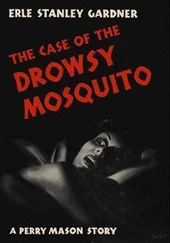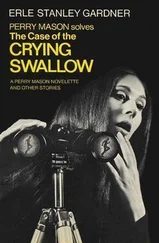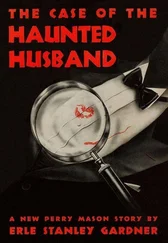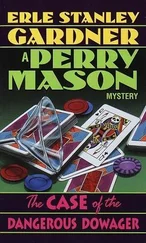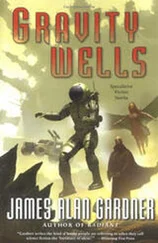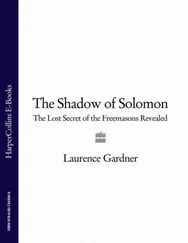Daniel Gardner - The Science of Fear
Здесь есть возможность читать онлайн «Daniel Gardner - The Science of Fear» весь текст электронной книги совершенно бесплатно (целиком полную версию без сокращений). В некоторых случаях можно слушать аудио, скачать через торрент в формате fb2 и присутствует краткое содержание. ISBN: , Издательство: Penguin Group (USA) Incorporated, Жанр: Психология, Политика, Прочая научная литература, на английском языке. Описание произведения, (предисловие) а так же отзывы посетителей доступны на портале библиотеки ЛибКат.
- Название:The Science of Fear
- Автор:
- Издательство:Penguin Group (USA) Incorporated
- Жанр:
- Год:неизвестен
- ISBN:9780525950622
- Рейтинг книги:3 / 5. Голосов: 1
-
Избранное:Добавить в избранное
- Отзывы:
-
Ваша оценка:
- 60
- 1
- 2
- 3
- 4
- 5
The Science of Fear: краткое содержание, описание и аннотация
Предлагаем к чтению аннотацию, описание, краткое содержание или предисловие (зависит от того, что написал сам автор книги «The Science of Fear»). Если вы не нашли необходимую информацию о книге — напишите в комментариях, мы постараемся отыскать её.
The Science of Fear — читать онлайн бесплатно полную книгу (весь текст) целиком
Ниже представлен текст книги, разбитый по страницам. Система сохранения места последней прочитанной страницы, позволяет с удобством читать онлайн бесплатно книгу «The Science of Fear», без необходимости каждый раз заново искать на чём Вы остановились. Поставьте закладку, и сможете в любой момент перейти на страницу, на которой закончили чтение.
Интервал:
Закладка:
So why is it that so many of the safest humans in history are scared of their own shadows? There are three basic components at work: the brain, the media, and the many individuals and organizations with an interest in stoking fears. Wire these three components together in a loop and we have the circuitry of fear. One of the three raises an alarm; the signal is picked up and repeated by the next component and then another; the alarm returns to the original component and a louder alarm goes out. Fear amplifies. Other alarms are raised about other risks, more feedback loops are created, and the “unreasoning fear” Roosevelt warned against becomes a fixture of daily life.
In part, this is an inevitable condition of modernity. Our Stone Age brains can’t change, we won’t abandon information technology, and the incentives for marketing fear are growing.
But while we may not be able to cut the circuitry of fear, we can at least turn down the volume. The first step is simply recognizing that there are countless individuals and organizations that have their own reasons for inflating risks, and that most journalists not only fail to catch and correct these exaggerations, they add their own. We need to be skeptical, to gather information, to think carefully about it and draw conclusions for ourselves.
We also have to recognize that the brain that is doing this careful thinking is subject to the foibles of psychology. This is actually more difficult than it sounds. Psychologists have found that people not only accept the idea that other people’s thinking may be biased, they tend to overestimate the extent of that bias. But almost everyone resists the notion that their own thinking may also be biased. One survey of medical residents, for example, found that 61 percent said they were not influenced by gifts from drug company salespeople, but only 16 percent said the same of other physicians. It’s as if each of us recognizes that to err is human, but, happily for us, we are not human.
But even if we accept that we, too, are human, coping with the brain’s biases is not easy. Researchers have tried to “debias” thinking by explaining to people what biases are and how they influence us, but that doesn’t work. Consider the Anchoring Rule. The reader now knows that when we have to guess a number, we unconsciously grab onto the number we came across most recently and adjust up or down from it. But if I were to mention that Mozart died at the age of thirty-four and then ask you to guess how many countries have a name beginning with the letter A , your unconscious mind would still deploy the Anchoring Rule and the number 34 would still influence your guess. Not even a conscious decision to ignore the number 34 will make a difference because the directive to ignore it comes from Head and Head does not control Gut. We simply cannot switch off the unconscious mind.
What we can do is understand how Gut works and how it sometimes makes mistakes. “People are not accustomed to thinking hard,” Daniel Kahneman wrote, “and are often content to trust a plausible judgment that quickly comes to mind.” That is the most important change that has to be made. Gut is good, but it’s not perfect, and when it gets risk wrong, people can come to foolish conclusions such as believing that young women are at serious risk of breast cancer while older women are free and clear, or that abandoning airplanes for cars is a good way to stay safe.
To protect ourselves against unreasoning fear, we must wake up Head and tell it do its job. We must learn to think hard .
Very often, Head and Gut will agree. When that happens, we can be confident in our judgments. But sometimes Head will say one thing, Gut another. Then there’s reason to be cautious. A quick and final judgment isn’t necessary to deal with most of the risks we face today, so when Head and Gut can’t agree, we should hold off. Gather more information. Think some more. And if Head and Gut still don’t match up, swallow hard and go with Head.
After the September 11 attacks, millions of Americans did the opposite and chose to abandon planes for cars. This mistake cost the lives of more than 1,500 people. Putting Head before Gut is not easily done, but for fears it can ease, and the lives it can save, it is worth the effort.
So maybe we really are the safest, healthiest, and wealthiest humans who ever lived. And maybe we can significantly reduce the remaining risks we face simply by eating a sensible diet, exercising, not smoking, and obeying all traffic regulations. And maybe we can expect more of this good fortune to extend into the future if current trends persist.
But, the determined worrier may ask, what if current trends don’t persist? What if catastrophe strikes?
Judging by what’s on offer in bookstores and newspaper commentary pages, it will strike. Energy depletion, climate chaos, and mass starvation are popular themes. So are nuclear terrorism and annihilating plagues. Catastrophist writing is very much in vogue, and it can be terribly depressing. “Even after the terrorist attacks of September 11, 2001,” wrote James Howard Kunstler, author of The Long Emergency , “America is still sleepwalking into the future. We have walked out of our burning house and we are now heading off the edge of a cliff.” Perhaps this will be—to use the title of a book by British astronomer and president of the Royal Society Martin Rees— Our Final Hour .
Armageddon is in the air. Cormac McCarthy’s The Road —a novel about a father and son wandering through a future America devastated by an unknown catastrophe—was released in 2006. A year later came Jim Crace’s The Pesthouse , a novel about two people wandering through a future America slightly less devastated by an unknown catastrophe. When two renowned authors working in isolation come up with near-identical plots, they are tapping into the zeitgeist, and it is grim, indeed.
Even Thomas Friedman—the New York Times columnist who made his name as a techno-optimist—occasionally slips into fearful pessimism. In September 2003, Friedman wrote, he took his daughter to college with the sense that “I was dropping my daughter off into a world that was so much more dangerous than the world she was born into. I felt like I could still promise my daughter her bedroom back, but I could not promise her the world, not in the carefree way that I had explored it when I was her age.”
Friedman’s story neatly captures a common belief. The past wasn’t perfect, but at least we knew where we stood. Now when we look into the future, all we see is a black void of uncertainty in which so many ways things could go horribly wrong. This world we live in really is a more dangerous place.
Oddly, though, when we look into the past that we think was not so frightening, we find a lot of people who felt about their time as we do about ours. It “was like the end of the world,” wrote the German poet Heinrich Heine in 1832. Heine was in Paris and cholera was sweeping across France. In a matter of hours, perfectly healthy people would collapse, shrivel like raisins in the sun, and die. Refugees fled their homes only to be attacked by terrified strangers desperate to keep the plague away. Cholera was new to Europe and no one knew how it was spread or how to treat the victims. The terror they felt as it swept the land is unimaginable. Literally so: We know, looking back, that this was not the end of the world—when we imagine nineteenth-century Paris, we tend to think of the Moulin Rouge, not plague—and that knowledge removes the uncertainty that was the defining feature of the experience for Heine and the others who lived through it.
Simply put, history is an optical illusion: The past always appears more certain than it was, and that makes the future feel more uncertain—and therefore frightening—than ever. The roots of this illusion lie in what psychologists call “hindsight bias.”
Читать дальшеИнтервал:
Закладка:
Похожие книги на «The Science of Fear»
Представляем Вашему вниманию похожие книги на «The Science of Fear» списком для выбора. Мы отобрали схожую по названию и смыслу литературу в надежде предоставить читателям больше вариантов отыскать новые, интересные, ещё непрочитанные произведения.
Обсуждение, отзывы о книге «The Science of Fear» и просто собственные мнения читателей. Оставьте ваши комментарии, напишите, что Вы думаете о произведении, его смысле или главных героях. Укажите что конкретно понравилось, а что нет, и почему Вы так считаете.

